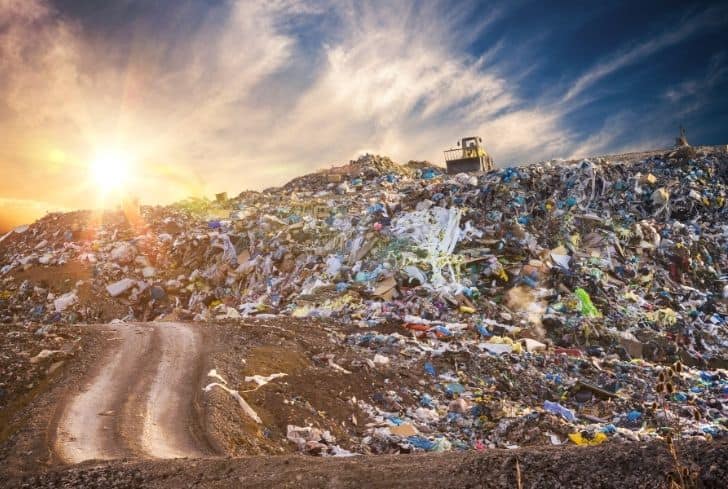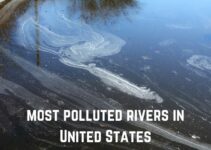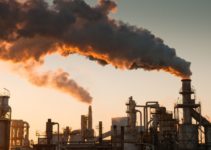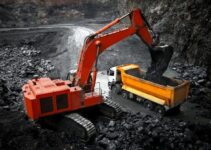When we talk about air or water pollution, the reactions garnered are stronger. This is because we can see the effects caused by the pollutants and their extent very clearly. It is normal human psychology to believe in what you see firsthand. Our land, on the other hand, is living a nightmare too.
We may not be able to see the effects with clarity, but the land is being polluted and abused constantly, and we are unable to calculate the damages incurred. Land Pollution has emerged to become one of the serious concerns that we collectively battle.
Never doubt that a small group of thoughtful, committed citizens can change the world; indeed, it is the only thing that ever has.
~ Margaret Mead
Land pollution, in other words, means degradation or destruction of the Earth’s surface and soil, directly or indirectly, as a result of human activities. Anthropogenic activities are conducted citing development, and the same affects the land drastically as we witness land pollution.
By drastic, we are referring to any activity that lessens the quality and/or productivity of the land as an ideal place for agriculture, forestation, construction, etc. The degradation of land that could be used constructively, in other words, is land pollution.
Land Pollution has led to a series of issues that we have come to realize in recent times, after decades of negligence. The increasing numbers of barren land plots and the decreasing numbers of forest cover are increasing at an alarming ratio.
Moreover, the extension of cities and towns due to the increasing population is leading to further exploitation of the available land.
Landfills and reclamations are being planned and executed to meet the increased demand for lands. This leads to further deterioration of land, and pollution caused by the landfill contents. Also, due to the lack of green cover, the land gets affected in several ways, like soil erosion, which washes away the fertile portions of the land. A landslide can also be viewed as an example.
Various Causes of Land Pollution
1. Deforestation and Soil Erosion
Deforestation carried out to create drylands is one of the major concerns. Land that is once converted into dry or barren land can never be made fertile again, whatever the magnitude of measures to redeem it is.
Land conversion, meaning the alteration or modification of the original properties of the land to make it use-worthy for a specific purpose, is another major cause. It hampers the land immensely.
Also, there is a constant waste of land. Unused available land over the years turns barren; this land then cannot be used. So in search of more land, potent land is hunted, and its indigenous state is compromised.
2. Agricultural Activities
With the growing human population, the demand for food has increased considerably. Farmers often use highly toxic fertilizers and pesticides to get rid of insects, fungi and bacteria from their crops. However, with the overuse of these chemicals, they result in contamination and poisoning of soil.
3. Mining Activities
During extraction and mining activities, several land spaces are created beneath the surface. We constantly hear about land caving in, which is nothing but nature’s way of filling the spaces left out after mining or extraction activity.
4. Overcrowded Landfills
Each household produces tonnes of garbage each year. Garbage like aluminum, plastic, paper, cloth, wood is collected and sent to the local recycling unit. Items that can not be recycled become a part of the landfills that hamper the beauty of the city and cause land pollution.
5. Industrialization
Due to an increase in demand for food, shelter, and house, more goods are produced. This resulted in the creation of more waste that needs to be disposed of.
To meet the demand of the growing population, more industries were developed, which led to deforestation. Research and development paved the way for modern fertilizers and chemicals that were highly toxic and led to soil contamination.
6. Urbanization
We humans have been making permanent settlements for at least the past 10,000 years. Most of the cities and towns, and the infrastructure created, will remain with us for thousands of more years into the future.
Many of us may not classify human settlements as “land pollution;” however, urbanization marks a significant change to the landscape that can cause land pollution in a variety of subtle and not-so-subtle ways.
7. Construction Activities
Due to urbanization, a large number of construction activities are taking place, which has resulted in huge waste articles like wood, metal, bricks, plastic that can be seen by naked eyes outside any building or office which is under construction.
8. Nuclear Waste
Nuclear plants can produce a huge amount of energy through nuclear fission and fusion. The leftover radioactive material contains harmful and toxic chemicals that can affect human health. They are dumped beneath the earth to avoid any casualty.
9. Sewage Treatment
A large amount of solid waste is leftover once the sewage has been treated. The leftover material is then sent to the landfill site, which ends up polluting the environment.
10. Littering
Littering is a common problem, no matter it is a city or a rural region. People just throw their garbage on the ground without caring about the adverse effects on the environment.
A common instance is that people just throw their cigarette butt on the ground every time. Since cigarettes contain elements harmful to the environment, it leads to land contamination.
Disastrous Effects of Land Pollution
1. Soil Pollution
Soil pollution is another form of land pollution, where the upper layer of the soil or the topsoil’s composition is damaged or becomes altered.
This is caused by the overuse of chemical fertilizers, soil erosion triggered by running water and other pest control measures, leading to loss of fertile land for agriculture, forest cover, fodder patches for grazing, etc.
The regeneration process takes at least 500 years for 2.5 centimeters of topsoil. The United States loses soil at the rate 17 times higher than it usually takes to generate new topsoil.
2. Groundwater Poisoning
When harmful substances from industrial processes, chemicals are improperly disposed of on the land or in illegal landfills or storages, the chemicals and other substances could end up in the groundwater system.
The process is called leaching. It can happen on farms, industrial sites, and landfills and affect the health of animals, plants and also humans.
3. Drinking-Water Problem
Drinking water is highly affected by land pollution. Nearly 50% of the world’s population does not have access to safe drinking water, and each year water-based diseases cause up to 10 million deaths.
4. Change in Climate Patterns
The effects of land pollution are very hazardous and can lead to the loss of ecosystems. When land is polluted, it directly or indirectly affects the climate patterns.
5. Environmental Impact
When deforestation is committed, the tree cover is compromised. This leads to a steep imbalance in the rain cycle. A disturbed rain cycle affects a lot of factors.
Most importantly, the green cover is reduced. Trees and plants help balance the atmosphere; without them, we are subjected to various concerns like Global warming, the greenhouse effect, irregular rainfall and flash floods, among other imbalances.
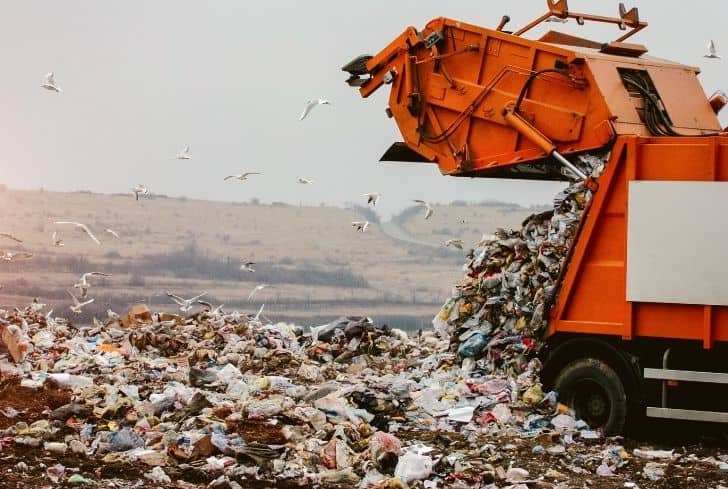
6. Effect on Human Health
The land, when contaminated with toxic chemicals and pesticides, lead to potentially fatal problems like skin cancer and the human respiratory ailments in particular.
Globally, 9,500 people are diagnosed with skin cancer every day. The toxic chemicals can reach our body through foods and vegetables that we eat as they are grown in polluted soil.
Land pollution also caused developmental deficiency in children. Chemicals, such as lead that are commonly found in contaminated soil and water, can impact a child’s cognitive development even when the exposure is very low.
7. Causes Air Pollution
Landfills across the city keep on growing due to an increase in waste and are later burned, which leads to air pollution. They become home for rodents, mice, etc., which in turn transmit diseases.
8. Distraction for Tourists
The city loses its attraction as a tourist destination as landfills do not look good when you move around the city. It leads to a loss of revenue for the state government.
9. Effect on Wildlife
The animal kingdom has suffered most in the past decades. They face a serious threat with regard to the loss of habitat and natural environment.
The constant human activity on land is leaving it polluted, forcing these species to move further away and adapt to new regions or die trying to adjust. Several species are also pushed to the verge of extinction, due to no homeland.
10. Water Nutrient Enrichment
Chemicals that are frequently used on agricultural farms, such as nitrogen, end up benefitting the crops only in a small proportion. The rest ends up in water populated by fish, algae, and other lifeforms.
As the nutrient-heavy water saps up most of the oxygen in the water, it leaves little oxygen for fish and other marine life. The water in that situation becomes unable to support most life forms.
11. Wildfires
When land areas are polluted, they usually become quite dry. The dry conditions created by pollutants in the soil create the perfect environment for wildfires and increases the probability of wildfires dramatically.
The fires can grow quickly because of the dry conditions and widening area of polluted land, thereby harming the whole environment and killing plants, animals and even humans.
12. Habitat Shifting
When deforestation and soil erosion are in progress, animals are forced to move from their natural habitat to find shelter and food. The change is too traumatic for some animals, and this even leads to loss of life. As a consequence, some species are posed with a greater risk of extinction.
13. Other Issues
Other issues that we face include increased temperature, unseasonal weather activity, acid rains, etc. The discharge of chemicals on land makes it dangerous for the ecosystem too.
These chemicals are consumed by the animals and plants and thereby making their way in the ecosystem. This process is called biomagnification and is a serious threat to the ecology.
Amazing Solutions To Land Pollution
1. Make people aware of the concept of Reduce, Recycle and Reuse.
2. Reusing materials help to reduce the requirement of harvesting resources. The products that cannot be reused can likely be recycled.
3. Reduce the use of pesticides and fertilizers in agricultural activities.
4. Reduce the use of non-biodegradable materials. By simply switching to a reusable cloth bag for groceries instead of plastic shopping bags will help cut down on the need for non-biodegradable materials.
5. Avoid buying packaged items as they will lead to creating garbage and end up in the landfill site.
6. Ensure that you do not litter on the ground and do proper disposal of garbage.
7. Buy biodegradable products.
8. Do organic gardening and eat organic food that will be grown without the use of pesticides or insecticide.
9. Create dumping ground away from residential areas.
10. Several creatures survive under the land. Disruption of the harmony of the land means disrupting their habitat as well. This has led to several creatures reaching the endangered status like Gilbert’s Potoroo in Australia.
11. Avoid littering and properly dispose of waste, which is an essential measure against land pollution both for households as well as for industries.
12. Education is key to mitigate the land pollution problem. We have to show people the adverse effects of land pollution and the way to mitigate them. Convincing others can motivate every one of us to make a significant contribution to save our environment.
We walk and survive on land. It is literally the base of our ecosystem. Therefore, it is in our good interest to take care of it and nurture it.
Infographic on Land Pollution
References:
